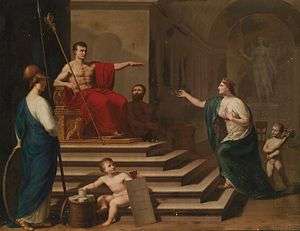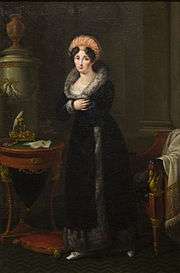Francesco Alberi
Francesco Alberi (3 March 1765, in Rimini – 24 January 1836, in Bologna) was an Italian painter, active in Bologna, Padua, Rimini, and Rome in a Neoclassical style.

He initially apprenticed with Giuseppe Soleri in Rimini, but by the age of twenty he became a pupil of Domenico Corvi in Rome. In five years, he returned to Rimini where he painted in oil, tempera, and fresco for many of the prominent families, such as Battaglini, Garampi, Ganganelli, and Spina. In 1799, he was elected professor of design for the Lyceum of Rimini. In 1803-6, he served professor of painting for the Academy of Fine Arts in Bologna, when he move to Padua. In 1810, he returned to Bologna as professor. He mainly painted paintings in a grandiose style depicting Greco-Roman classic themes or historic subjects. Among his major works are paintings are the hagiographic Paintings of Napoleon, as well as the Death of Dido, the Death of Cato, and the Recognition of Achilles.
He wrote a few treatises including Teorie dell'arte pittorica and a Riposta a sei lettere anonime. The latter was responses to criticisms of the academy and his works. In addition he wrote other extensive assessments of art of his day.

Sources
- Boni, Filippo de' (1852). Biografia degli artisti ovvero dizionario della vita e delle opere dei pittori, degli scultori, degli intagliatori, dei tipografi e dei musici di ogni nazione che fiorirono da'tempi più remoti sino á nostri giorni. Seconda Edizione.. Venice; Googlebooks: Presso Andrea Santini e Figlio. pp. 10–11.
- Trecanni Encyclopedia entry
- Ceiling frescoes for Palazzo Albicini (Apotheosis of Albicini Family)